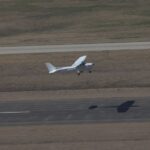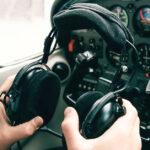BY: STEVEN DAUN, NATIONAL CHIEF PILOT
When it comes to Federal Aviation Regulations (FAR), there is a saying that FAR Part 61 tells you how to get your certificates, and Part 91 tells you how to lose them. Part 61 does, in fact, tell us what the minimum requirements are for earning our various certificates and ratings. In Part 91 we see regulations that govern everything that we are permitted to do in an aircraft. Most of these regulations are clear, specific and defined. They are mostly unambiguous, with one exception. It is one of the smallest and most powerful of all the FARs. After all, it only contains three sentences. With these three sentences the FAA gives you, the Pilot in Command, full authority to exercise your best judgment and prove that you can make solid, rational and correct decisions; that every time you exercise your privileges you consider all the risks and possible outcomes of your decisions; and that you have thought about all the contingency plans possible to ensure the safe and successful outcome of your flight. Yes, with three little sentences, §91.3 says it all. Specifically, it is the first sentence which is perhaps the most powerful sentence in all the FARs.
§91.3 Responsibility & Authority of The Pilot in Command
A. The pilot in command of an aircraft is directly responsible for, and is the final authority as to, the operation of that aircraft.
B. In an in-flight emergency requiring immediate action, the pilot in command may deviate from any rule of this part to the extent required to meet that emergency.
C. Each pilot in command who deviates from a rule under paragraph (b) of this section shall, upon the request of the Administrator, send a written report of that deviation to the Administrator.
To illustrate this point, we will use a pilot named Joe and his Electronic Flight Bag (EFB). Joe is a Private Pilot and just earned his Instrument Rating. Joe just purchased a 1980 low wing airplane and is taking his family on a trip. Joe also just purchased a brand-new iPad with a subscription to an EFB service which, according to the regulations, means that Joe does not need to carry paper charts with him.
Halfway through the trip, while cruising in Instrument Meteorological Conditions (IMC), Joe’s iPad runs out of battery and shuts off. He informs ATC that his iPad failed, and he needs radar vectors to the nearest airport. Upon landing Mr. FAA approaches Joe’s aircraft, and the following conversation takes place:
FAA: “Tell me what happened.”
Joe: “My iPad ran out of battery and failed.”
FAA: “No problem, you had a power cord to plug into your cigarette lighter, right?”
Joe: “Yes I did.”
FAA: “Then why did you not plug it in and continue to use your iPad?”
Joe: “Well, the airplane did not have a cigarette lighter.”
FAA: “No problem, why didn’t you take out your other iPad and use it?”
Joe: “I only had one iPad.”
FAA: “No problem, you had your paper charts on board but couldn’t reach them, right?”
Joe: “No, I didn’t because the FARs say that I could use my iPad in lieu of paper charts.”
FAA: “That is true; however, according to FAR §91.3 you are responsible for the safe operation of your flight, and you did not exercise or demonstrate safe Pilot in Command decision making authority.”
The moral of this story is that just because the FARs say that you can do something, it doesn’t mean that it stops there. While the regulations say you don’t need paper charts for non-121 or 135 flights, you do need to give some thought to “prudent decision making.” In the case of electronic flight bags, AC No: 91-78 deals with the operation of EFBs in light general aviation aircraft. The intent of the ACs is to enable pilots to use EFBs while suggesting that having a backup is prudent. This is clear when they say “…It is suggested that a secondary or backup source of aeronautical information necessary for the flight be available to the pilot in the aircraft. The secondary or backup information may be either traditional paper-based material or displayed electronically.”
Why does the FAA do this? Through the regulations, they believe the following:
- You have earned your pilot certificates and have demonstrated that you can make the same Pilot in Command decisions as that of an airline pilot
- You are responsible enough to evaluate risk and are fully capable of deciding what is required to conduct a safe flight
- You are faced with a variety of situations and options while you fly
- You have accepted and will exercise the latitude to operate as necessary in that environment
However, if something should happen, they will review and question the decisions that you made and the judgment that you exercised. In the majority, if not all of these cases, they apply the rationale of the most powerful sentence of §91.3. That is “The pilot in command of an aircraft is directly responsible for, and is the final authority as to, the operation of that aircraft.”
The next time you take an airplane up, take some time to think about all the different aspects of your flight and the decisions you will make.
DO
- Have a contingency plan in place for all phases of your flight from taxi to parking
- Always review the flight that you are about to take and go through all the “What ifs”
- What if I lose my engine?
- What if I lose my radios?
- What if my tablet stops working?
- What if I encounter bad weather or rough turbulence?
- Have a Plan B, and if possible,
- Have a Plan C
DON’T
- Cut corners or try to get by with doing the absolute minimum
- Try to save money by not buying paper charts
- Rush and skip important preflight tasks because you are running out of time
- Ignore FAR Part §91.3
Taking these precautions will not only keep you and your passengers safe, it will prevent you from having an uncomfortable conversation with Mr. FAA when he walks up to your airplane to discuss your judgement.










